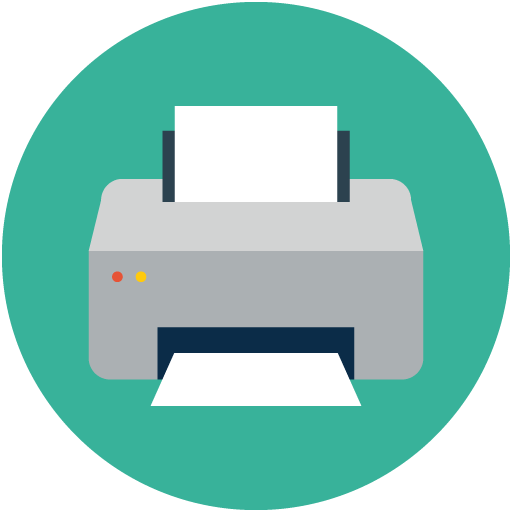Tell Stories With Data
Your data or mine?
With a unique combination of quantitative research, marketing and social media skills, I can not only get you the original data you need to rise above the fray, but also turn it into an irresistibly compelling story. Or I can work with the data you already have–like transaction data, social media metrics, app usage or customer feedback–to find the story that will win you new audiences and attention.
Data drives conversations
My content marketing projects drive social conversations because I bake the social strategy into the content. Each piece features tweetable links, bloggable excerpts and shareable infographics created by me or an independent designer. And it comes with a social media promotion plan calibrated to build your network and your brand.
The right form for your data-driven content
You can use data to power content like:
- White papers, reports and ebooks that generate media attention and leads
- Shareable infographics that present new insight
- Blog posts in an authoritative voice
- Presentations that make audiences take note
- Social media shareables like charts or data factoids
Data journalism for content marketing
Content marketers at the world’s most innovative companies and publications turn to me for data journalism that sets their content apart.
Here are some examples of my data-driven work.
No Results Found
The page you requested could not be found. Try refining your search, or use the navigation above to locate the post.
Power your content with data
Ready to start turning data into great, compelling content? Here are some of my top tips on how to tell great stories with data.

Raising community-minded kids: Not just for people in Morningside Heights?
How can we instill social values in our kids? That's a question Rob and I struggle with constantly. In its least subtle form, the inculcation can begin as early as eighteenth months, as we've learned this election season ("No, sweetie, we don't clap forthat man.") At...

Target V.P. Michael Axelin on the seven components of successful innovation
Tonight’s symposium featured Michael Alexin, Oberlin College class of ’79, V.P. of Softlines Design and Product Development at Target. Yes, this is the man responsible for keeping me clothed during my last pregnancy, and even tougher, the post-pregnancy pre-weight loss months.
Michael’s work puts him at the heart of delivering on Target’s brand promise of “affordable design”, and he stressed that in this day and age, that comes down to the challenge of continuous innovation. He offered a nice summary of the seven key components of innovation:
- Observation: In focus groups, people often lack the clarity or expertise to articulate their needs. By observing people in various environments you can see what they may not see themselves. Tom Kelley in The Art of Innovation talks a lot about observation. Once you start observing carefully, all kinds of insights and opportunities can open up. Take example of elliptical machine: a GM guy noticed the elliptical path of his daughter’s runnning and wondered if you could capture that movement without the impact of running, and sold the idea to Precor, which has turned it into a profitable business. Observation helps you identify problems that need solutions, or white space. Opportunities for true innovation.
- Imagination: Example of iPod: imagining what it would look like to build a company arouund an MP3 player combined with a music sales service. Imagination is an intuitive process that generates a lot of ideas. In preschool, imagination treated as a skill that has to be nurtured. But that’s been lost in American culture, let alone American business. That’s something we have to find and nurture in colleagues and employees. Need to create space for imagination. Create “white space” — quiet time. Everything is going so fast, so how do you create time to allow ideas to spring forth. Need to create culture of idea acceptance not idea judgement.
- Brainstorming: Everyone says they brainstorm but it’s not part of an institution’s every day culture. Lots of companies love to go to an off-site…it may be fun, but it doesn’t last. A brainstorm generates a lot of ideas in a short time. The more open the process, the more likely that the next big idea will emerge. Guidelines for successful brainstorming:
- Set ground rules: leave titles at door. Generate not judge ideas. Have fun.
- Strong moderator who doesn’t dominate discussion.
- Sharpen the focus by starting with a clear statement of the problem that isn’t too broad or narrow.
- Go for quantity not quality. Encourage any thought.
- Make the process visual. I work with 150 designers; they are visual not verbal. We encourage them to sketch their ideas and put them on the wall. Then as editing process we let everyone vote for their five favorite ideas.
- Creativity: Sheehy: creativity can be described as the letting go of cdrtainties. Embrace ambiguity and the unknown. Use originality to defeat habit. Defy convention to achieve greatness. Example: I.M. Pei’s pyramid for the Louvre entrance. Initially very controversial. Eventually it got built, and the juxtaposition of the modern and the ancient set the stage for a new approach to architecture of Paris — now the blend of old and new is almost their hallmark.
- Design. Design is the core of innovation. Success depends on having a funciton, and appeal. “What engineers were to the age of steam, and scientists were to the age of reason, designers will be to our age.” Designers are in demand because great design enhances and differentiates. Design must be functional. It’s the practical side. Kelly: Design is a way of life. Target: you don’t have to have a lot of money to have great design. Target gets a lot of credit for making great design accessible to consumer. Coincides with trend towards upscaling of America. Sometimes seems like we have the right to pursuit of life, liberty and pursuit of luxury. Design is a huge differentiator for Target in the marketplace. Key thing is the emotional connection that gets established with the Target brand.
- Simplicity: Schumacher: “Any intelligent fool can make things bigger, more complex… it takes a touch of genius to move in the opposite direction.”
- Speed: Consumers want the latest thing know. Need to react quickly to design, market and sales trends. Apparel is pretty low tech so you can’t speed it up that much. It’s about how quickly you make decisions. Process needs to be quick to react to change. Have to take away bureaucracy to get speed. We reward team members for speed. Bias towards action that encourages people to get it done and get it done fast.
- Collaboration:Even though one person often has that crackling electric idea, it’s really a team sport. One person may have the idea but it takes hundreds to implement and execute. ClearRx idea came from one woman who then brought it to Target. Hundreds of people involved from all parts of organization to make it live. Collaboration + shared focus = innovation.
Hmm. Somehow I ended up with eight. I’m hoping Michael will tell me which of these is the “bonus” component.

Jerry Greenfield on entrepreneurship at Oberlin (live blogging)
Continuing my live blogging of Jerry Greenfield on entrepreneurship.

Thinking about entrepreneurship in Oberlin
Reflections on responsible entrepreneurship by Jerry Greenfield of Ben & Jerry’s fame.

Is Facebook trying to kill you?
From Blade Runner to the Matrix, from Star Trek’s Borg to Battlestar Galactica’s Cylons, we’ve spent a lot of time imagining the day when our super-strong, super-smart robots get tired of vacuuming and decide they want to rule the world. That’s given me an opportunity to consider a more immediate threat: Facebook. Not just Facebook, actually, but all the social networks and online communities to which we give our eyeballs, braincells, hearts and dollars. Could these online communities constitute the machine threat that sci-fi has taught us to anticipate?
